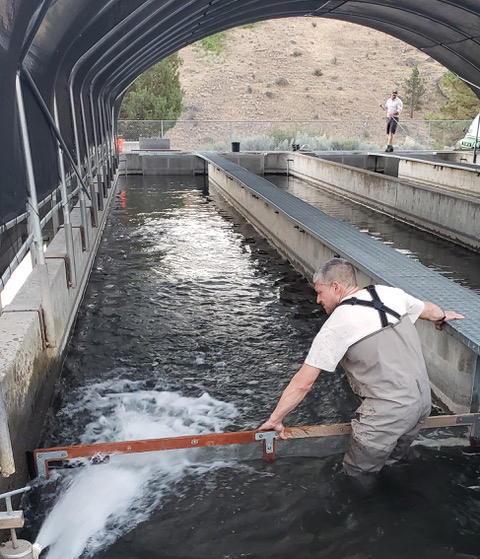Michigan to Adjust Salmon, Lake Trout Stocking in Lake Michigan

Youth and adult holding Chinook salmon on charter boatFollowing recommendations of the Lake Michigan Committee, the Michigan Department of Natural Resources will adjust Chinook salmon and lake trout stocking in 2017 and 2018 to relieve predation pressure on prey (alewives) in Lake Michigan.
This will be the fourth significant stocking adjustment to predator levels since 1999. The five-member Lake Michigan Committee is made up from all state management agencies that border Lake Michigan and the Chippewa-Ottawa Resource Authority. Recommendations from the committee represent the consensus of its members.
The committee worked throughout the summer with interested anglers and constituents to amend a proposal that had substantially targeted only a Chinook salmon reduction to today’s recommendation to reduce a mix of species to achieve the same reduction in predation pressure in Lake Michigan while recognizing the importance of Chinook.
“We received a considerable amount of comments from our advisory committee, sporting groups, anglers and the general public on how to address the predation issue,” said Jay Wesley, DNR Lake Michigan Basin coordinator. “The one common goal we all shared through the review process was to maintain our diverse fishery in Lake Michigan, with Chinook salmon as an important component of our multibillion-dollar sport fishery.”
While most of the stocking adjustments will occur in other states, Michigan will stock 300,000 Chinook salmon in 2017 (down 46 percent from 2016) and will discontinue federally stocked lake trout in Grand Haven, Holland and New Buffalo in 2018. Lake Michigan’s Chinook fishery is supported by 60 percent wild fish that mostly are produced in Michigan’s rivers and streams. Michigan also will continue to stock 1.57 million coho salmon, 580,000 steelhead and 550,000 brown trout to maintain a diverse fishery.
In the near future, Michigan will eliminate its own stocking of lake trout in Lake Michigan (50,000) and replace these fish with steelhead.
“We appreciate the robust engagement Michigan citizens brought to this issue,” said DNR Fisheries Division Chief Jim Dexter. “They learned more about the difficulty managing Lake Michigan, and we learned more about their fishing preferences. In the end, we will still meet our biological goal to reduce predation pressure and continue to provide a world-class fishery.”
Michigan will continue to work with anglers and state, tribal and federal partners to collect and evaluate wild fish recruitment, charter boat and creel success rates, prey fish and predator abundance to determine when salmon stocking might be increased.
“Data on predator and prey numbers, salmon weight and salmon condition (health) are considered annually to determine when it is safe to increase stocking in the future,” said Wesley.
The DNR is committed to collaborative management of Lake Michigan management agencies and anglers alike to maintain a diverse, world-class fishery. These actions in Michigan and in other jurisdictions will help protect the fishery and the economies throughout Michigan that depend on it.
Learn more about the changing ecology of Lake Michigan and its impact on salmon by watching a video on YouTube.






